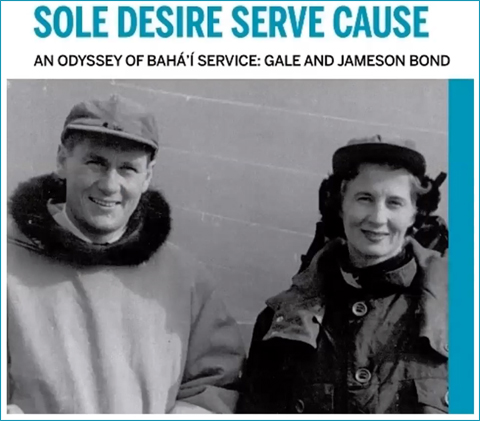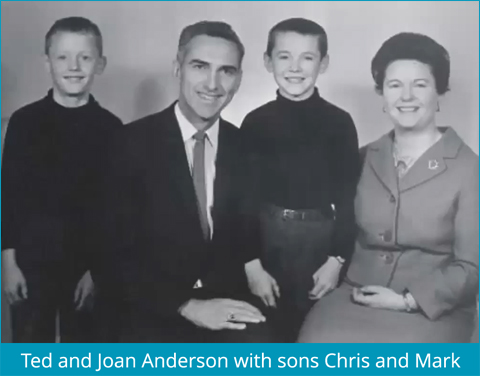 |
 |
|
Correct version May 17, 2022 Lighting Up the Territories: Bahá’ís in Canada’s North “Attach great importance to the indigenous population of America… should they be educated and guided, there can be no doubt that they will become so illumined as to enlighten the whole world…” — ‘Abdu’l‑Bahá, Tablets of the Divine Plan, April 9, 1916 
The “Heroic Age” of the Bahá’í Faith – spanning the missions of its central Figures, including ‘Abdu’l‑Bahá, the founder Bahá’u’lláh’s son and interpreter – lasted from 1844-1921, the year of ‘Abdu’l-Bahá’s passing. Last year, Bahá’ís marked the centenary of the “Formative Age” of the community as it established institutions worldwide and emerged from obscurity. Amid whispers of spring, as part of the Big Ideas series, Ottawa’s Leslie Cole surveyed a remarkable facet of the Formative Age: the growth of the Faith in Canada’s territorial North. Ms. Cole embraced the Bahá’í Faith in Yukon, and has studied, lived and worked in domestic and international Arctic territories for years. Her talk, titled ‘Under One Tent,’ was the fruit of her research for a forthcoming book. Late in His life, ‘Abdu’l‑Bahá wrote a series of letters to the North American believers, then a tiny group, outlining his “Divine Plan” for the spread of Bahá’u’lláh’s teachings. Among His many instructions included the inestimable value of teaching the Faith to indigenous peoples. Letters to the Canadian Bahá’ís specifically named five Northern territories in Canada (Yukon, Mackenzie, Keewatin, Franklin and Ungava) and repeatedly emphasized the importance of the Indigenous and Inuit peoples in the development of a future Bahá’í community. The Bahá’í message on the oneness of humanity was heard in pockets of Canada’s North, however, the first Canadian National Spiritual Assembly was not elected until 1948. Among its earliest priorities was to send “pioneers” – volunteer teachers and community-builders – to the territories specified by ‘Abdu’l‑Bahá. Meanwhile, Prime Minister Louis St. Laurent, in establishing the first Department of Northern Affairs and National Resources in 1953, said that “Canada should give Eskimos the same rights, privileges…as all other Canadians.”  The Bahá’í world undertook a 10-year “crusade” in 1953 to spread the teachings and establish communities around the globe. Although the “Heroic Age” had ended with ‘Abdu’l‑Bahá’s passing, the courage and resolve of these pioneers is astounding, nowhere more than in Canada’s North. Cole’s stories included the heroism of the Bond and Anderson families. Jameson and Gail Bond lived, in the early ‘50s, in a remote weather station in Arctic Bay (Franklin) under the harshest of conditions. Joan and Ted Anderson arrived in Whitehorse to a blunt warning (“If I was you, I’d get right back on that train!”), but they forged a hardy Bahá’í community in Yukon between 1953 and 1972. The Andersons, who lived in the Yukon Territory, earned the respect and friendship especially of the Tlingit. Dora (Johns) Wedge, linking two outstanding Tlingit families, dreamed of a boat trip across a “big water”, where she and her family met a strangely dressed man welcoming them to a golden-domed building; when she encountered the Andersons, she recognized that she had seen ‘Abdu’l‑Bahá and the iconic Shrine of the Báb, Bahá’u’lláh’s predecessor. Ultimately, over 100 of her relatives became Bahá’ís. The first four Local Spiritual Assemblies of the North, three in Yukon (one in Whitehorse where the Andersons lived) and one in Yellowknife (Mackenzie Territory), were elected by 1963, at the end of the 10-year plan. The Carcross Assembly in the Yukon included Dora Wedge and her husband Harold and six other Indigenous believers among the nine members of the council. Another institution of Bahá’í community development was “Bahá’í House”. While Yukon Baha’is were able to hold Bahá’í gatherings in their homes, Gail and Jameson Bond experienced the need for dedicated properties in the Eastern Arctic. Yellowknife acquired buildings of their own in the late 1960s, but in the Eastern Arctic prefabricated Bahá’í Centres built by volunteer labour in Frobisher Bay (now Iqaluit) and Baker Lake were essential to further growth. They still exist. So do the hardships. The growth and consolidation of Bahá’í communities in the Canadian North remains difficult, perhaps even harder in recent decades when secularization has become widespread in Canada. When Leslie Cole declared her faith in 1981 in Whitehorse, the community was amazingly diverse and growing quickly, but there is so much more to be done. What has not changed is the call raised by ‘Abdu’l‑Bahá in the Tablets of the Divine Plan to “establish the oneness of the world of humanity…” Believers still recite His prayer for help: O
God! Thou seest my weakness, lowliness and humility before Thy
creatures; nevertheless, I have trusted in Thee and have arisen in the
promotion of Thy teachings among Thy strong servants, relying on Thy
power and might…
|
|
|